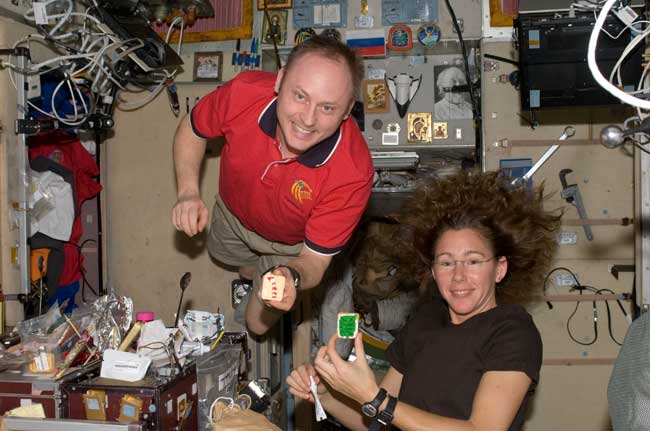Space Station Astronauts Lose Bone Strength Fast

Astronauts that spend long months aboard the International Space Station lose bone strength faster than previously thought and have a higher risk of breaking their hips later in life, a new study reports.
A survey of 13 space station astronauts found that their bone strength dipped by at least 14 percent on the average during their half-year stays aboard the orbiting laboratory.
Three of the astronauts lost up to 30 percent of their bone strength during their long-duration spaceflights, putting them on par with the bone strength of older women with osteoporosis on Earth, the study reported.
"If preventive measures are not taken, some of our astronauts may be at increased risk for age-related fractures decades after their missions," said study leader Joyce Keyak, an orthopedic surgery and biomedical engineering professor at the University of California, Irvine.
Keyak and colleagues at UC San Francisco and the Universities of Space Research Assn. in Houston used a new computer program designed to examine the risk of hipbone fracture in people with osteoporosis to analyze hipbone scans of one female astronaut and 12 male astronauts.
Past studies have found that an astronaut's bone mineral density can decrease by between 0.4 percent and 1.8 percent each month. But Keyak's investigation found the drop in bone strength, between 0.6 percent and 5 percent each month, to be substantially greater.
The NASA-funded research is detailed in the online version of the science journal Bone.
Get the Space.com Newsletter
Breaking space news, the latest updates on rocket launches, skywatching events and more!
NASA has long known that astronauts in space gradually lose muscle strength and bone density over time while on long-duration spaceflights because their bodies float in microgravity, rather than work against the tug of Earth's gravity each day.
To lessen the effects, space station astronauts must exercise at least two hours everyday and undergo weeks of rehabilitation after their return to Earth.
The hip and spine of long duration astronauts typically experience the greatest amount of bone loss, researchers said. Hip fractures nearly always require hospitalization or major surgery, while vertebra fractures in the spine can lead to loss of height, severe back pain and deformity, they added.
- Video - How Astronauts Work Out in Space
- Quiz - The Reality of Life in Orbit
- Video - Space Station Acrobatics
Join our Space Forums to keep talking space on the latest missions, night sky and more! And if you have a news tip, correction or comment, let us know at: community@space.com.

Tariq is the Editor-in-Chief of Space.com and joined the team in 2001, first as an intern and staff writer, and later as an editor. He covers human spaceflight, exploration and space science, as well as skywatching and entertainment. He became Space.com's Managing Editor in 2009 and Editor-in-Chief in 2019. Before joining Space.com, Tariq was a staff reporter for The Los Angeles Times covering education and city beats in La Habra, Fullerton and Huntington Beach. In October 2022, Tariq received the Harry Kolcum Award for excellence in space reporting from the National Space Club Florida Committee. He is also an Eagle Scout (yes, he has the Space Exploration merit badge) and went to Space Camp four times as a kid and a fifth time as an adult. He has journalism degrees from the University of Southern California and New York University. You can find Tariq at Space.com and as the co-host to the This Week In Space podcast with space historian Rod Pyle on the TWiT network. To see his latest project, you can follow Tariq on Twitter @tariqjmalik.









